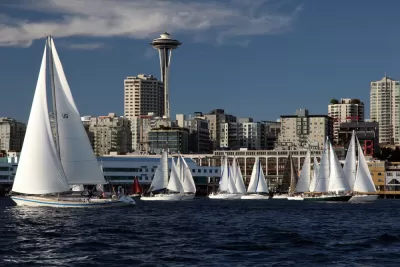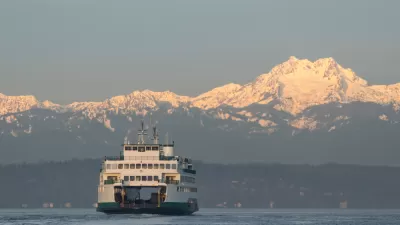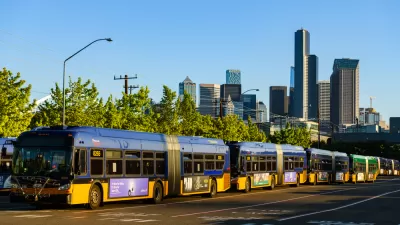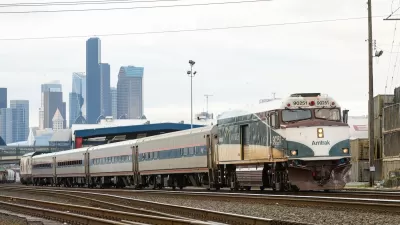Seattle appears to be following the Vancouver, B.C. model by increasing population and residential density while investing in transit. If it works, traffic congestion will not deteriorate, and vehicle trips should drop.

America's growing cities face an immense challenge: can they add population without greatly exacerbating traffic congestion? By one measure, Vancouver, British Columbia set the standard by "reduc(ing) traffic by 20 to 30 percent since 2006 while growing its population by 4.5 percent," according to this August 2013 post.
Outside of the six transit legacy cities in the U.S: "Boston, Chicago, New York, Philadelphia, San Francisco and Washington, D.C. -- that developed dense downtowns long before the automobile and have always maintained significant transit ridership," it is difficult to increase transit share as newer cities were largely designed around the automobile, observes Scott Beyer in Governing.
Seattle may come closest to emulating Vancouver model by "relaxing zoning laws to allow for denser development" and improving transit.
As America’s fastest-growing big city -- it added 21,000 people in 2015 -- it’s growing denser and more congested --[but] countywide bus ridership since 2002 has grown at a faster rate, more than double, compared to the population.
Residents invest in transit
Last November, the Puget Sound region passed a measure that will fund the the $53.8 billion Sound Transit 3 plan. More telling of the pro-urban outlook of city residents, though, was the passage of a transportation measure in 2015. "(T)he biggest winners appear to be Seattle’s urbanists — its advocates for more bicycling, transit and density," reported The Seattle Times.
And a year earlier, Seattle residents stepped up to fund buses after King County voters, the majority of which live outside Seattle, rejected increasing a car tab and a 0.1 percent sales tax.
"Time will tell whether these measures help Seattle maintain, or even improve, its mobility," concludes Beyer.
Already, average congestion and commute times there remain below that of legacy cities. The real test will be keeping it that way even as it continues to get denser and bigger.
FULL STORY: The Right Kind of Transit for 'In-Between' Cities

Planetizen Federal Action Tracker
A weekly monitor of how Trump’s orders and actions are impacting planners and planning in America.

San Francisco's School District Spent $105M To Build Affordable Housing for Teachers — And That's Just the Beginning
SFUSD joins a growing list of school districts using their land holdings to address housing affordability challenges faced by their own employees.

The Tiny, Adorable $7,000 Car Turning Japan Onto EVs
The single seat Mibot charges from a regular plug as quickly as an iPad, and is about half the price of an average EV.

With Protected Lanes, 460% More People Commute by Bike
For those needing more ammo, more data proving what we already knew is here.

In More Metros Than You’d Think, Suburbs are Now More Expensive Than the City
If you're moving to the burbs to save on square footage, data shows you should think again.

The States Losing Rural Delivery Rooms at an Alarming Pace
In some states, as few as 9% of rural hospitals still deliver babies. As a result, rising pre-term births, no adequate pre-term care and "harrowing" close calls are a growing reality.
Urban Design for Planners 1: Software Tools
This six-course series explores essential urban design concepts using open source software and equips planners with the tools they need to participate fully in the urban design process.
Planning for Universal Design
Learn the tools for implementing Universal Design in planning regulations.
Smith Gee Studio
City of Charlotte
City of Camden Redevelopment Agency
City of Astoria
Transportation Research & Education Center (TREC) at Portland State University
US High Speed Rail Association
City of Camden Redevelopment Agency
Municipality of Princeton (NJ)





























